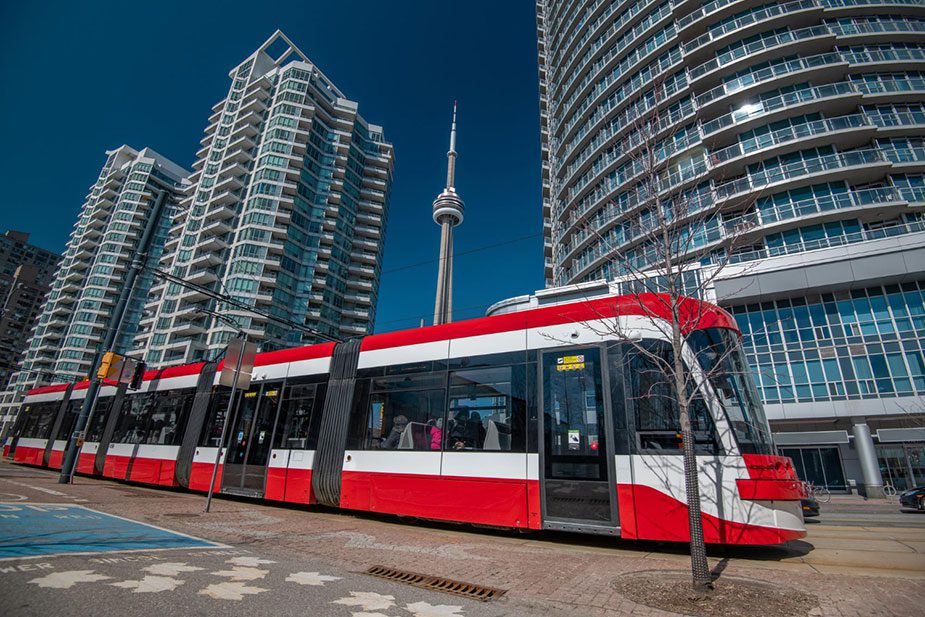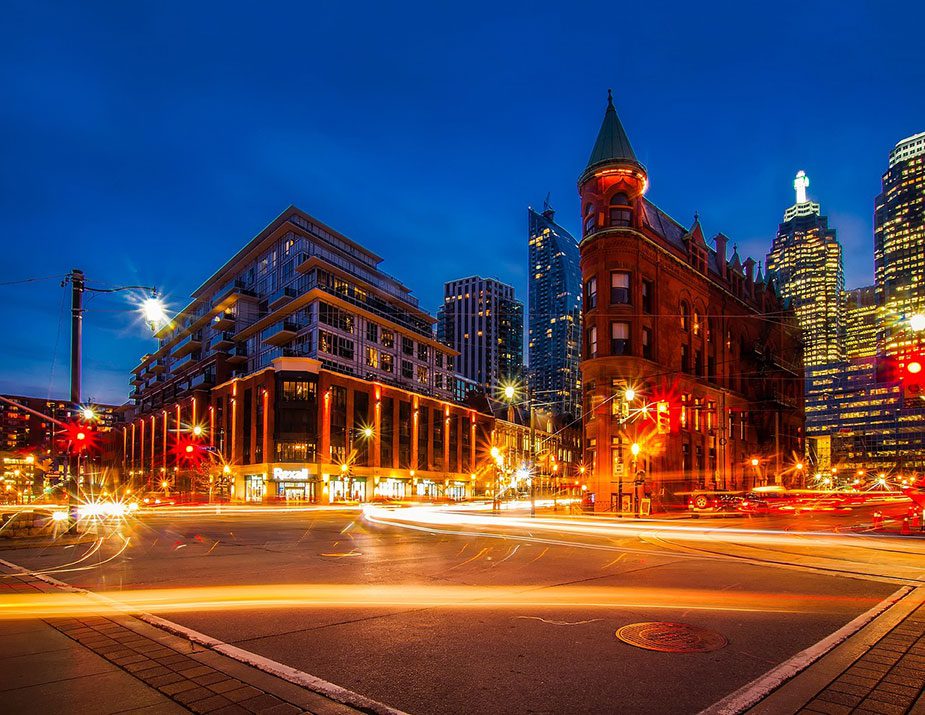
As the best real estate agents in Toronto, we know a thing or two about navigating the city. Our expert agents have driven, bussed, trained and walked around all corners of the Six, hosting open houses and closing deals. Now, we want to pass a few nuggets of wisdom to you – the beleaguered Toronto commuter.
This article is written with an outsider’s perspective in mind. We want to reach people who are long distance home hunting or planning on moving to Toronto. That said, the advice below is equally relevant to our long-time Toronto compatriots.
All aboard!
Understand the Nuts and Bolts of the TTC
For millions of Torontonians, commuting is synonymous with the TTC – the Toronto Transit Commission. If you don’t own a car, can’t fathom shelling out taxi fare to get to work, and don’t want to risk the city bike lanes, chances are you’re forking over $3.30 to ride the TTC.
If you’re new in town, the TTC takes some practice to master. It’s a complex patchwork of various transit options touching all corners of the Big Smoke. (Seriously, look at a Ride Guide Map of Toronto; it looks like a dense electrical switchboard!) It’s all part of adapting to life in Toronto, and you’ll eventually get the hang of it.
You have three transit options: buses, streetcars and subways. The buses and streetcars are slower, clocking in at around 17 km/hr, including stop times, but in downtown Toronto, they’re so ubiquitous that you’re never far from a stop. Subways are faster – clocking in at 32 km/hr, including stops – but you may need to walk a distance to hit a station.
The city is serviced by two main subway lines: the U-shaped Line 1 that cuts a swath through the downtown core, dipping into Union station and then forking north toward Vaughan and Finch, respectively; and Line 2, which basically runs the length of Bloor/Danforth Street.
Most Torontonians leverage a mix of transportation options in their commute. But if you’re lucky enough to live and work on the subway line, you may rarely see the inside of a bus while living here.
Let the Apps Do (Most of) the Thinking
Two decades ago, it was common to see Torontonians huddled around a physical map of the TTC, plotting their trip. It was also common to chat with motorists who believed they had some insider knowledge about the fastest route through downtown.
Now, pretty much everyone uses apps – and so should you. There’s no sense trying to “hack” the system, when so much of that system is reliant on chance. Open Google Maps, input your start and end destinations, stipulate your target arrival time, peruse your options…then let the app do the thinking. It isn’t as romantic as trading secrets about the best commuter routes, but it is the most efficient way to get where you need to go.
Sidestep Congestion with a Mental Map of the Worst Offenders
This tip is for all the motorists out there hoping to get home in time for dinner.
Let the apps do most of the thinking – not all. It still pays to know when and where bottlenecks occur in Toronto. An app like Google surveys current traffic, but it falters slightly in predicting future traffic patterns – for instance, what Lakeshore Boulevard East will look like in an hour or at 5 p.m.
For a mental map of the worst offending intersections, check out this CTV News article. It lists the 10 most congested intersections in the city, pulling its data from Toronto’s “Travel Time Index.” Learn them. Memorize them. Then avoid them.

Inner City Commutes in Peak Rush Hour? Consider the Bike Share.
It’s clocking out time in Toronto. Buses grind to a halt on Dufferin. Streetcars get stuck in the fray on crowded King Street. The subways are stuffed elbow-to-elbow with commuters heading home to North York, and every motorist looks like they’re one second away from losing it.
In these instances, take a deep breath and remember there’s another way. A faster, freer way to travel through the city. And all it requires is a nominal fee and a bit of sweat: the commuter bike.
Toronto bike lanes never get congested. In rush hour, you whiz past idling cars, arriving at your destination in a fraction of the time. If you don’t have a bike of your own, simply look for a nearby Bike Share Toronto station (there are over 700 dotted throughout the city) and pay the $.12 a minute to mount your escape from the bottlenecked traffic.
Search for Real Estate in Accessible Areas
This tip is firmly in our wheelhouse here at Harvey Kalles. If your commute is a routine source of frustration, even after you’ve tried the tips above, consider looking for a new home with an impressive transit score, walk score or motorist accessibility.
The excellent real estate agents at Harvey Kalles can help. We’ll work with you to turn your must-have criteria into a reality. We’ll search for accessible dream homes that slash your commute time, while also ensuring that the property and area meet your rigorous standards. Whether you’re looking for smooth commutes from Richmond Hill or “15-minute zones” in the downtown core, we’ve got you covered. We know this city like the back of our hand.
Get Comfortable and Practice Your Mindfulness
Even if you own a car, you might choose to commute via public transit – solely for the opportunity to “tune out.” In these cases, treat your commute less like a necessary inconvenience and more like a relaxation opportunity. This is your time. No one’s making demands on you; you have no obligations. Just sit back and take a few deep breaths.
This slight shift in thinking can have a positive impact on your overall well-being – seriously. The Harvard Gazette reports that 20 minutes of mindfulness twice per day can significantly lower your stress responses and improve cognitive focus. And you don’t need folded legs or eyes closed to achieve it. The article suggests that people simply “focus on the present by paying attention to their bodily sensations, thoughts, emotions, and especially their breath.”
When you eventually come back to earth, you’ll wonder why you ever stressed out about commutes in the first place.
For more tips on navigating Toronto in other ways – chasing the nightlife, gobbling up the city’s best eats, finding the best neighbourhoods for your family, etc. – peruse our blog. And if you’re looking to own a piece of this fantastic city, contact our experienced agents to get the ball rolling.

